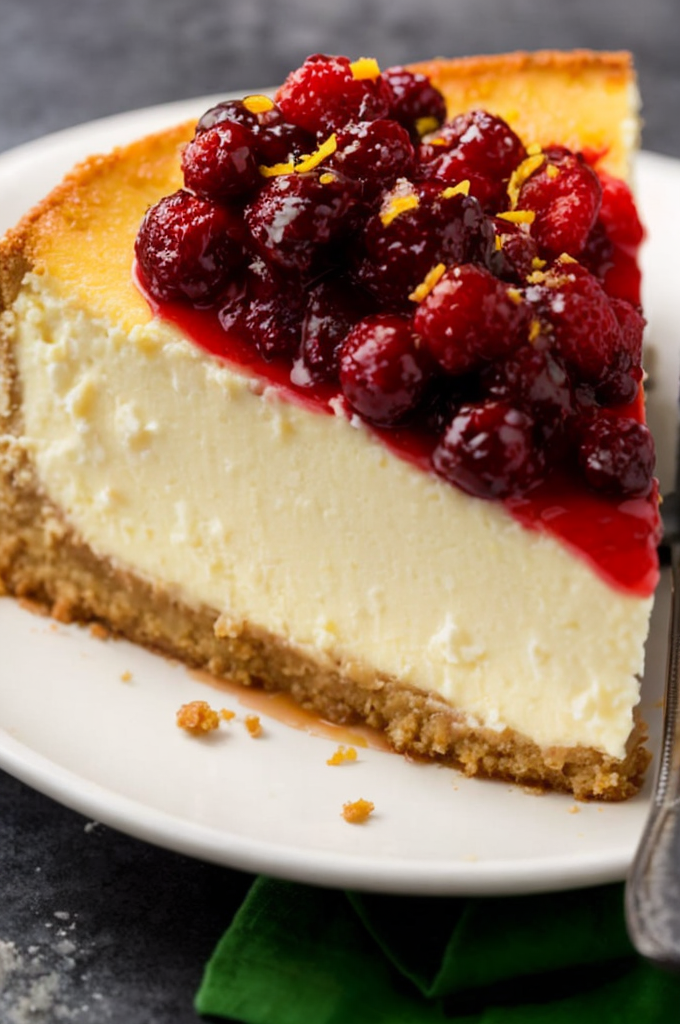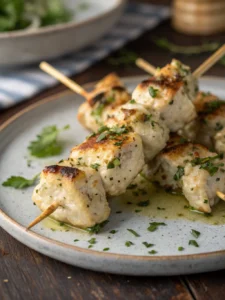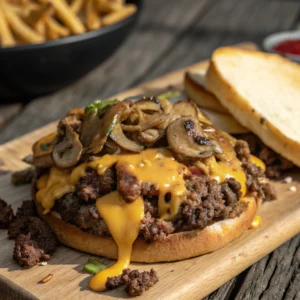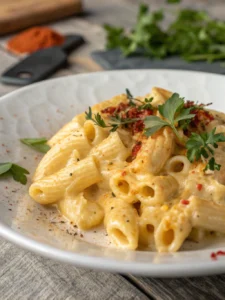Perfect Orange Ricotta Cheesecake – A Family Favorite Delight
Indulge your family’s tastes with our Perfect Orange Ricotta Cheesecake, a delightful twist on the traditional cheesecake that promises an explosion of citrus refreshment in every bite. The rich creaminess of ricotta juxtaposed with the tangy zing of orange makes this cheesecake more than just a dessert; it’s a tantalizing experience. Embrace the inviting aroma and incredible flavors of this irresistible cheesecake, crafted to become a firm family favorite and add a touch of sunshine to your table.
Let’s delve into the layers of flavor, starting with the fresh burst of orange that grants this cheesecake its signature appeal. The creamy texture, achieved from high-quality ricotta, complements the crispy crust, creating a juxtaposition of textures that is utterly satisfying. Whether for an elegant dinner party or a cozy family gathering, this cheesecake is a surefire way to win hearts and satisfy sweet cravings.
Quick Recipe Highlights
- Flavor Profile: The Perfect Orange Ricotta Cheesecake offers a bright and refreshing mix of tangy and sweet, with the orange zest adding a delightful zing and the ricotta providing a mellow creaminess.
- Texture: Expect a creamy, smooth consistency that melts in your mouth, complemented by a subtly crunchy base for added texture.
- Aroma: The cheesecake is fragrant with citrusy notes from the orange, filling your kitchen with a warm, inviting scent.
- Visual Appeal: A vibrant, golden hue adorned with fresh orange slices or zest garnishes adds an elegant touch to its presentation.
- Skill Level Needed: With a medium difficulty level, this recipe requires basic baking skills and attention to detail to achieve the perfect texture.
- Special Equipment: A springform pan is essential to ensure easy release and a professional-looking cheesecake presentation.
Recipe Overview
- Difficulty Level: This cheesecake is moderately challenging, requiring careful attention to ingredient measurements and baking techniques to deliver a perfect blend of flavors and textures.
- Category: Perfect as a dessert or a sweet treat, ideally suited for festive occasions or as a striking addition to any meal.
- Cuisine: Drawing from Italian culinary tradition, this cheesecake reflects the harmonious marriage of classic flavors with innovative twists.
- Cost: With budget-friendly ingredients, this cheesecake is accessible without compromising on quality or taste, offering an affordable luxury.
- Season: Best enjoyed in spring and summer when oranges are at their peak freshness, ensuring maximum flavor impact.
- Occasion: Perfect for birthdays, anniversaries, or simply when you want to spoil yourself and family with a sumptuous dessert.
Why You’ll Love This Recipe
The Perfect Orange Ricotta Cheesecake is a harmony of flavors that captivates any palate. The irresistible combination of creamy ricotta and the zesty brightness of orange creates a taste sensation that’s both traditional and refreshing. The way the flavors marry together, with a buttery graham cracker crust that adds depth and balance, elevates this dessert to a spectacular culinary experience that you’ll love sharing with loved ones.
Convenience and simplicity defined: Though it requires careful attention in parts, this cheesecake offers straightforward preparation that doesn’t demand complex techniques. The baking process allows you to entertain or relax while the cheesecake sets, making it an ideal choice for hosts leading a busy life yet seeking to impress.
From a nutritional standpoint, using ricotta instead of heavier cheeses might mean it aligns better with your dietary goals while still offering a creamy indulgence. The inclusion of fresh orange juice and zest not only boosts flavor but brings a dose of vitamin C, ensuring a slight health benefit with every slice.
Socially, this cheesecake is a conversation starter and showstopper, making it perfect for gatherings. Its vibrant presentation and delightful aroma draw guests in, while the decadent flavors keep them engaged and inquiring about your secret recipe. You’ll find this dessert not only satisfies flavor cravings but also fosters community spirit.
Finally, the accessibility and cost-effectiveness of the ingredients make it a great addition to your regular recipe rotation. Utilizing simple pantry staples, this cheesecake avoids niche or expensive ingredients without sacrificing the luxury feel of a gourmet dessert. It’s an approachable luxury that you can share time and again.
Historical Background and Cultural Significance
The origins of cheesecake trace back to ancient Greece, but the Italian twist introduced the delectable element of ricotta, bringing the Perfect Orange Ricotta Cheesecake to life. This version preserves the roots of Italian culinary craftsmanship, showcasing the versatility and adaptability of the beloved cheesecake in global cuisines.
Culture-wise, the Italian flair for desserts introduces unique flavors and innovation, as seen in the amalgamation of orange and ricotta. Serving this cheesecake echoes traditional Italian hospitality, embodying warmth and an inviting atmosphere at the dining table.
As the recipe evolved, contemporary variations have added their twists, showcasing adaptability to modern flavors and dietary preferences while retaining the classic soul. This adaptability demonstrates its wide-reaching appeal, making it a cherished recipe across different cultures.
Regionally, the core elements like ricotta have prominent places within Italian regions, where they are prized for their versatility and rich history. This cheesecake showcases regional pride with seasonal ingredients, staying true to its roots while adapting to diverse contexts.
Ingredient Deep Dive
Ricotta cheese, a quintessential Italian staple, plays a starring role in this cheesecake. Its origin harkens back to the tradition of using leftover whey from cheesemaking, showing an early propensity toward sustainability. Ricotta’s creamy texture and mild flavor are perfect for a balanced cheesecake, offering a lower-fat alternative to traditional options.
Nutritionally, ricotta is a great source of calcium and protein, making it a healthier choice in desserts. When selecting ricotta, look for a fresh, creamy texture that’s not too watery and ideally sourced from a reputable brand or Italian specialty store. Keep it refrigerated and consume within a few days of opening for maximum quality.
Meanwhile, oranges, contribute a vibrant citrus flair to the cheesecake. The history of oranges is rich and international, with the fruit being valued for centuries across civilizations. In terms of health benefits, oranges provide a substantial dose of vitamin C and antioxidants, aligning indulgence with wellness.
When choosing oranges, go for those that are firm and bright, signaling freshness. Store them at room temperature if you plan to use them soon, or refrigerate for longer preservation. For flavor variations, consider substituting or blending with other citrus fruits like lemons or limes for a unique twist.
Common Mistakes to Avoid
- Avoid overmixing your batter, which can lead to a dense cheesecake instead of a creamy texture.
- Do not rush cooling; letting the cheesecake cool slowly prevents cracks and ensures even texture throughout.
- Skipping the water bath can result in a dry cheesecake; it’s essential for achieving a smooth, crack-free result.
- Overcooking is a common issue; aim to bake until the center slightly jiggles for the perfect outcome.
- Using low-quality ricotta or substituting with another cheese can dramatically alter the texture and flavor.
- Inadequate chilling time is a pitfall; ensure that the cheesecake sets to maintain its structure and flavor.
- Failing to properly line your pan or cake tin can lead to sticking and presentation issues.
- Don’t skimp on the zest; it’s crucial for imparting rich orange flavor throughout the cheesecake.
Essential Techniques
To perfect the cheesecake’s creamy texture, the mixing technique is crucial. It’s important not to overwork the batter, as gentle mixing helps integrate the ingredients without introducing excess air, which can cause cracking.
Mastering the water bath technique is another vital element. Ensuring even and gentle cooking, the water bath provides an insulating effect, helping the cheesecake to bake evenly and remain moist throughout.
Using visual cues is helpful: when your cheesecake’s perimeter is set and the center wiggles slightly, it’s ready to be taken out of the oven. Overbaking risks a dry texture, while underbaking can result in a mushy center.
Implementing proper preparation of the springform pan is also key. Lining the base and sides ensures easy removal and presentation as intact as possible. With these techniques, you’re set for cheesecake success.
Pro Tips for Perfect Orange Ricotta Cheesecake
Select the freshest oranges to maximize zest and juice flavor—organic is preferable as you’ll be using the zest. Ensure even distribution for a rich citrus experience.
For a silky texture, allow ricotta to come to room temperature before mixing with the other ingredients. This ensures even blending and a smooth batter.
Always pre-chill your crust before adding the filling. This ensures the crust remains firm and doesn’t blend into the cheesecake mixture.
After removing the cheesecake from the oven, run a small knife around the edge to release it from the sides of the pan. This step helps prevent cracking as it cools.
Resist the temptation to open the oven door while baking. Sudden temperature changes can cause the cheesecake to collapse or develop cracks.
For an added burst of flavor, you can infuse the cheesecake batter with a few drops of orange extract to deepen the citrus notes.
Consider using a high-quality vanilla bean paste instead of vanilla extract for a more robust vanilla undertone that complements the orange beautifully.
When serving, dress with candied oranges or a light dusting of powdered sugar to garnish and add an extra layer of flavor and prettiness.
Variations and Adaptations
For regional variations, incorporate other citrus fruits like lemons or blood oranges for a delightful twist aligned with Mediterranean ingredients. This adds complexity to the classic orange profile.
In winter months, you might adapt by using ginger-infused crusts that complement the warming spices of the season. This offers a comforting contrast to the bright citrus.
Dietary modifications could include a vegan version utilizing non-dairy ricotta and egg substitutes, maintaining the core flavor profile while catering to different nutritional needs.
For additional flavor experimentation, try adding a spoonful of honey or a dash of cinnamon into the batter, which can enrich the dessert with an earthier kick.
Regarding texture, consider experimenting with the crust by using different biscuits or incorporating nuts for added crunch.
Finally, for presentation, serve the cheesecake with vibrant fresh fruit compotes on the side, offering vibrant color and additional flavor depth, transforming it into a centerpiece-worthy dessert.
Serving and Presentation Guide
To elevate presentation, slice uniformly and use a hot knife method to achieve clean cuts through the cheesecake, wiping the knife between each cut.
Garnishing is simple yet impactful; opt for orange curls, edible flowers, or dust with icing sugar for an elegant finish that matches the dessert’s taste profile.
Traditional accompaniments might include a light fruit coulis or a dollop of whipped cream to enhance the creamy, citrus-rich notes.
For a modern twist, consider serving individual mini-cheesecakes in glass jars for a portable, visually appealing option that vies with traditional presentations.
Temperature-wise, serve chilled to maintain texture and refreshing quality; avoid room temperature to prevent structural compromise.
Portion sensibly, aiming for slices that are both generous and manageable, to ensure a satisfying yet not overwhelming dessert experience.
Wine and Beverage Pairing
A light, refreshing white wine such as a Moscato or a Riesling pairs beautifully with this cheesecake, enhancing the citrus flavors without overpowering them.
Non-alcoholic options like a fresh citrus soda or an iced herbal tea offer a refreshing balance, cleansing the palate with each comforting bite.
For those seeking a hot beverage, an Earl Grey tea pairs particularly well, with its subtle bergamot flavors complementing the dessert’s citrus notes.
Chill your chosen beverage appropriately; whites and sodas are better enjoyed cold, while warm beverages should be served slightly cooled, avoiding overwhelming the cheesecake’s delicate flavors.
When considering serving suggestions, chilled glasses add a touch of sophistication and refreshment to accompany your indulgent dessert.
Storage and Shelf Life
To store your cheesecake, first let it completely cool before wrapping it tightly with plastic wrap, then placing it in the refrigerator for up to 4-5 days.
Keep the temperature consistent at around 4°C to maintain freshness and prevent bacterial growth, ensuring your cheesecake remains safe and delicious to eat.
Use airtight containers if slices are removed individually to minimize air exposure and avoid drying out, preserving the creamy texture.
Signs of spoilage include an off smell, changes in texture, or visible mold; ensure your cheesecake is consumed before any of these occur for optimal enjoyment.
Reheating is not recommended due to potential texture alteration; enjoy the cheesecake straight from the fridge for the best experience.
For longer preservation, consider freezing, ensuring it’s wrapped securely in plastic wrap and foil, lasting up to 2 months. Thaw overnight in the refrigerator before serving.
Make Ahead Strategies
Prepare the crust in advance, securely storing it in the fridge to save time on cheesecake day, ensuring readiness for filling without compromising freshness.
Store the batter separately in the fridge for up to 24 hours, allowing for relaxed assembly and baking closer to serving time, accommodating a busy schedule.
Quality remains intact if steps are properly timed. Ensure all elements are well covered and chilled to preserve their intended texture and aroma.
Assemble the cheesecake and chill thoroughly before serving—this strategic step ensures optimal set and flavor development over time.
Reheating is not advised, but for fresh elements like toppings, add just before serving to maintain a vibrant look and freshness.
Add zest or garnish before presentation; this retains visual appeal and complements the cheesecake’s chilled temperature.
Scaling Instructions
Halve the recipe for a smaller occasion, adjusting baking time slightly, monitoring closely to prevent overbaking. Use smaller pans accordingly.
Conversely, double or triple the recipe with ease, adjusting baking time as required, which may be longer but not proportional. Larger pans or multiple batches help manage volume.
Equipment adjustments relate to the size of the mixer or quantity of pans; ensure your kitchen tools are suitable for scaling to prevent mishaps.
Timing requires attention; larger volumes affect cook time, so use visual cues as your guide to perfect doneness.
Storage expands to accommodate larger quantities; have sufficient chilling space to preserve multiple cheesecakes for events or gatherings.
Nutritional Deep Dive
From a macronutrient perspective, the cheesecake delivers adequate fats for rich flavor, with protein derived predominantly from ricotta, balancing the macronutrient profile.
Micronutrient analysis reveals the inclusion of vitamin C from fresh oranges and calcium from ricotta, lending beneficial elements despite the dessert’s indulgent nature.
Health-wise, consider ingredient quality; opt for minimally processed choices to maintain nutrient integrity and minimize additives.
Portion control ensures enjoyment without excess; small, satisfying slices allow appreciation of flavors and balance within dietary considerations.
Manageable segments account for weight management, allowing incorporation into balanced diets without overindulgence.
For those monitoring dietary intake, adapt the recipe with lighter options like reduced-fat ricotta, emphasizing pleasure aligned with health goals.
Dietary Adaptations
For a gluten-free version, substitute traditional crust ingredients with gluten-free biscuits, ensuring all elements maintain delicious integrity with this simple swap.
Create a dairy-free alternative using dairy-free ricotta and margarine for the crust, adjusting baking time slightly to align with the modified ingredient structure.
A vegan cheesecake might use non-dairy ricotta and alternative binders, such as chia or aquafaba, crafting a dessert that caters to various lifestyles while retaining core flavors.
Manipulate carbohydrate content by opting for low-carb sweeteners and bases, aligning the cheesecake with low-carb dietary plans without compromising taste.
Adopt keto preferences by integrating almond flour bases and erythritol as sweeteners, offering cheesecake indulgence that complements the keto framework.
Paleo methods can be achieved with almond flour and coconut derivatives, preserving paleo principles while delivering a tantalizing flavor.
For low-FODMAP needs, select low-FODMAP compatible ingredients, balancing the recipe’s deliciousness with dietary guidelines that respect digestive health.
Understand specific dietary implications, allowing each version to be navigated smoothly with ingredient knowledge and preparation expertise.
The Recipe
Perfect Orange Ricotta Cheesecake
Serves: 8
Prep Time: 20 mins
Cook Time: 60 mins
Total Time: 80 mins
Kitchen Equipment Needed
- Springform pan
- Mixing bowls
- Electric mixer
- Microplane or zester
- Spatula
- Baking sheet
Ingredients
- 1 1/2 cups graham cracker crumbs
- 1/4 cup unsalted butter, melted
- 2 cups ricotta cheese
- 1 1/4 cups sugar
- 4 large eggs
- 1 tbsp orange zest
- 1/4 cup fresh orange juice
- 1 tsp vanilla extract
Directions
- Preheat your oven to 325°F (160°C). Prepare a springform pan by greasing it lightly.
- In a bowl, combine graham cracker crumbs and melted butter, mixing until evenly moist. Press mixture firmly into the pan base.
- Bake the crust for 10 minutes, then let it cool. Reduce oven temperature to 300°F (150°C).
- In a mixing bowl, beat ricotta and sugar until smooth. Add eggs one at a time, incorporating fully before adding next.
- Mix in orange zest, juice, and vanilla extract until combined.
- Pour batter over the prepared crust and smooth the top with a spatula.
- Bake for 60 minutes, or until the edges are set and center jiggles slightly. Turn off oven and let cheesecake cool inside with door ajar.
- Once cooled, refrigerate for at least 4 hours or overnight before serving.
Recipe Notes
- Ensure all ingredients are at room temperature to achieve the smoothest batter consistency.
- Serve with fresh orange slices or a light dusting of powdered sugar for an elegant finish.
- For added depth of flavor, replace 1/4 cup of sugar with honey.
Troubleshooting Guide
Ensure even blending to avoid a lumpy texture. If the cheesecake feels dense, consider mixing less next time or ensuring ingredients are fully at room temperature.
Balance flavors by ensuring ample zest and juice; lacking citrus is remedied with additional zest or pure orange extract in small quantities.
Solve temperature problems by accurately using an oven thermometer; uneven baking suggests checking for hot spots or adjusting pan placement.
If coping with equipment challenges, choose the right-sized pan for the recipe volume. Adjust batter if scaling for distribution consistency.
Ingredient substitutions can affect texture and taste; adjust baking time and temperature to accommodate changes.
Timing variances may require vigilance; alter cooking time as necessary, verifying with slight center jiggle as success cue.
Common equipment errors can be avoided by routine checks, like pan seals and mixer stability, reducing mishaps in baking.
Ingredient swaps demand adjustment—substitute responsibly and test small batches for controlled adaptation.
Recipe Success Stories
Community feedback praises the uncomplicated yet sophisticated flavor profile that appeals to both traditionalists and those seeking modern variation.
Success variations include using a mixture of citrus fruits for a four-citrus experience that tangles the tenets of sunnier, zestier dessert options.
Unique adaptations like gluten-free crusts have been welcomed by those with dietary restrictions, leading to shared moments of inclusive joy.
Reader photos showcase diverse garnishing and presentation, leading to creative reinterpretations and inspiring others to try similar adaptations.
Photography tips suggest capturing cheesecake in a naturally lit space; pairings with pale backgrounds highlight the dessert’s vibrant appeal.
Frequently Asked Questions
FAQ 1: Can I use low-fat ricotta for this cheesecake?
Yes, low-fat ricotta will work, but expect a slight variation in creamy texture. Balancing with additional zest or vanilla can enhance overall taste without overpowering the cheesecake’s foundation.
FAQ 2: How do I prevent my cheesecake from cracking?
Use a water bath to insulate the cheesecake, and avoid rapid temperature changes. Loosening edges with a knife and permitting slow cooling can help maintain the perfect appearance.
FAQ 3: What’s the best way to store leftovers?
Refrigerate covered, maintaining freshness for up to 4-5 days. Consider slicing and using containers to reduce exposed surface area, thus preserving flavor and freshness.
FAQ 4: Is it possible to freeze the cheesecake?
Yes, wrap tightly in plastic and a layer of foil, then freeze for up to two months. Thaw gently in the fridge overnight before serving to maintain optimal texture.
FAQ 5: What makes the ricotta version different from traditional cheesecake?
The use of ricotta provides a lighter, slightly less rich base, with a distinctive gentle tang, infusing the cheesecake with a fresh flavor and creamy texture unique to Italian interpretations.
Additional Resources
Explore related cheesecake recipes that incorporate seasonal fruits, offering diversity in flavors that keep dessert fun and varied.
Delve into technique guides for mastering baking essentials like water baths, ensuring you have the foundational skills to tackle a range of baked goods.
Course through ingredient information resources for deeper insight into pairing and replacements. Knowledge heightens culinary confidence in every adjustment made.
Consider equipment recommendations to streamline kitchen efficiency, ensuring optimum performance and preventing kitchen mishaps.
Contemplate seasonal variation ideas, allowing for personalized touches in recipes, reflecting times of year while maintaining core appeal.
Join the Conversation
Engage via social media to share your results, inspiring others with your variations and improvements on the Perfect Orange Ricotta Cheesecake.
Share photography tips that help others capture the beauty and essence of culinary creations, highlighting plating and presentation prowess.
Consider writing recipe reviews or sharing your experiences, noting any personal twists and success stories that offer insight and encouragement.
Foster community connection through fulfilling exchanges of suggestions, ideas for improvement, and collective appreciation of a beloved classic comfort.
Encourage and explore shared engagement by submitting variations for a communal recipe book, highlighting the collective creativity of home bakers worldwide.



